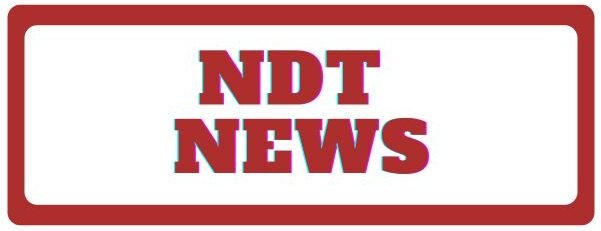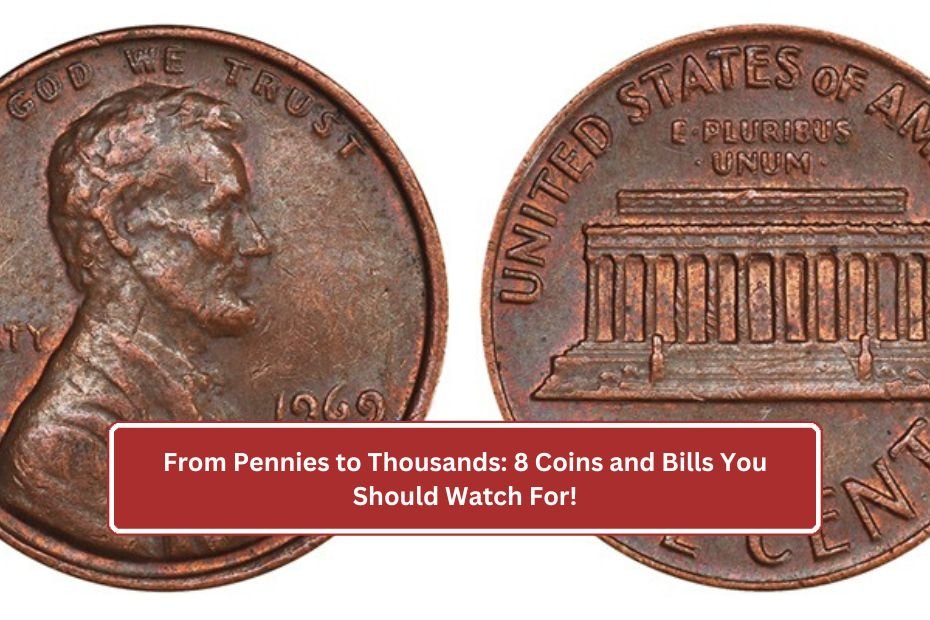Sometimes, you don’t have to dig deep for treasure—it could be right in your pocket! Many people overlook the coins and bills they handle daily, not knowing that some of them could be worth a fortune. With the right knowledge, you might find a hidden gem worth over $15,000 in your loose change. Let’s take a look at eight valuable coins and bills that you should be keeping an eye on.
Table of Hidden Treasures
| Coin/Bill | Description | Estimated Value |
|---|---|---|
| 1955 Lincoln Doubled Die Penny | Heavy doubling on date and inscriptions like “LIBERTY.” | $1,250 or more |
| 1969-S Lincoln Doubled Die Penny | Similar to the 1955 version, but rarer with heavy doubling. | More than $15,000 |
| 1944 Steel Wheat Penny | Error coin made of steel instead of copper, around 50 were minted. | $75,000 to $110,000 |
| 1965 Silver Dime | Mistake coin, weighs more than the standard clad dime. | Around $3,000 or more |
| 1965 Silver Quarter | Another mistake coin made of silver, not copper-nickel. | Around $7,000 or more |
| Coins from 1965 or Earlier | Dimes, quarters, and half dollars made before 1965 contain 90% silver. | Worth at least their silver value |
| Paper Money with Errors | Includes misaligned prints, ink smears, and unique serial numbers. | Value varies depending on error |
| 2014 and 2016 Counterfeit $1 Bills | Rare bills with identical serial numbers due to a printing error. | Up to $150,000 |
1. 1955 and 1969-S Lincoln Doubled Die Pennies
The 1955 and 1969-S Lincoln pennies are known for their “doubled die” error, where the date and words on the coin appear doubled. The 1955 penny can be worth around $1,250, while the rarer 1969-S version can go for more than $15,000. These coins are easy to spot because of the visible doubling, so keep an eye out for them in your spare change!
2. The 1944 Steel Wheat Penny
The 1944 steel wheat penny is a rare error coin. It was supposed to be made of copper, but a small batch was mistakenly produced with steel. There are only about 50 of these pennies in existence, and they can sell for $75,000 to $110,000. You can check if your penny is steel by seeing if it sticks to a magnet!
3. 1965 Silver Dime and Silver Quarter
In 1965, the U.S. Mint switched from making coins with silver to a different material. However, some silver dimes and quarters were still produced by mistake. A 1965 silver dime is worth around $3,000 or more, and a 1965 silver quarter can fetch around $7,000. These mistake coins weigh more than the standard versions, so check your coins carefully.
4. Coins from 1965 or Earlier
Any dimes, quarters, and half dollars made before 1965 are composed of 90% silver, making them valuable even if they are worn. The value of these coins is tied to the current price of silver, so they are always worth more than their face value. Finding one of these older coins in your change could mean you’ve got a small treasure!
5. Paper Money with Errors
Paper money can be valuable too, especially if there are printing mistakes. Look for errors like ink smears, misaligned prints, or unique serial numbers. “Star notes” (bills with a star next to the serial number) can also be worth more. The value of error notes depends on how rare the mistake is.
6. 2014 and 2016 Counterfeit $1 Bills
In 2014 and 2016, some $1 bills were printed with identical serial numbers, making them rare and highly valuable. These bills are technically counterfeit, but collectors are willing to pay up to $150,000 for them. Look for Series 2013 notes with a “B” Federal Reserve Seal and specific serial number ranges that end with a star.
7. Learning About Your Coins
If you think you have a valuable coin, it’s important to get it checked by an expert. American Numismatic Association (ANA) dealers can give you an idea of what your coin might be worth. Make sure to get multiple opinions before selling to get the best price.
8. Technology Can Help
Apps like CoinID can assist you in identifying valuable coins using AI. This can make it easier and more fun to go through your collection and see if you have any hidden treasures.
Conclusion
Searching through your change could lead to an exciting discovery. From rare error coins like the 1955 doubled die penny to valuable paper money with unique serial numbers, your spare change might be worth much more than you think. Take time to carefully inspect your coins and bills, and if you think you’ve found something valuable, consult with an expert. Happy treasure hunting!
FAQ’s
How can I tell if my penny is a rare 1944 Steel Wheat Penny?
To check if your penny is a 1944 Steel Wheat Penny, use a magnet. If the penny sticks to the magnet, it’s made of steel and is one of the rare error coins worth between $75,000 and $110,000. If it doesn’t stick, it’s likely a regular copper penny.
What types of errors make paper money more valuable?
Valuable paper money errors can include ink smears, misaligned prints, and unique serial numbers. Bills with a star next to the serial number, known as “star notes,” can also be worth more, depending on their condition and rarity.
Where can I get my coins evaluated for value?
You can take your coins to American Numismatic Association (ANA) dealers or local coin shops for evaluation. Many experts will give you a free assessment to help you understand the value of your coins and bills. It’s a good idea to get opinions from multiple dealers for the best estimate.

